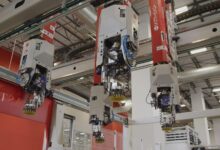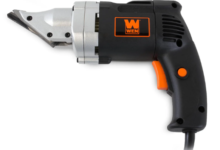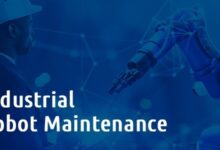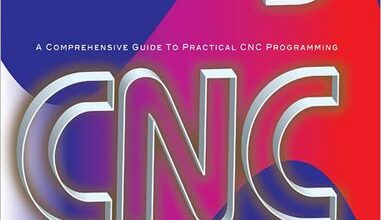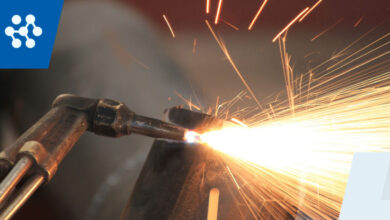The Future of Industrial Cutting Solutions
Advertisement
Introduction
The future of industrial cutting solutions is an exciting topic that is shaping the manufacturing industry in new and innovative ways. As technology continues to advance, the need for more efficient and precise cutting solutions is becoming increasingly important. In this article, we will explore the latest trends and developments in industrial cutting solutions, as well as their strengths and weaknesses.
Industrial cutting solutions encompass a wide range of technologies and techniques used in various industries such as automotive, aerospace, and medical devices. From laser cutting to waterjet cutting, there are numerous methods available for manufacturers to choose from. The future of industrial cutting solutions lies in the integration of advanced technologies such as artificial intelligence and automation to improve efficiency and productivity.
As the demand for high-quality products continues to rise, manufacturers are under increasing pressure to produce components with higher precision and accuracy. Industrial cutting solutions play a crucial role in achieving these standards, by enabling manufacturers to cut materials with incredible precision and speed.
In recent years, there has been a significant shift towards the adoption of new materials such as composites and advanced alloys in manufacturing processes. These materials present unique challenges when it comes to cutting and shaping, requiring specialized cutting solutions to ensure accurate and efficient production.
The future of industrial cutting solutions is bright, with new technologies emerging that promise to revolutionize the way manufacturers cut and shape materials. From 3D printing to robotics, these advancements will open up new possibilities for manufacturers to create complex components with incredible precision and speed.
However, with these new technologies also come challenges and limitations that must be addressed. In the following sections, we will explore the strengths and weaknesses of the future of industrial cutting solutions in more detail.
Overall, the future of industrial cutting solutions holds immense potential for the manufacturing industry, with the promise of increased efficiency, accuracy, and productivity. By embracing new technologies and innovations, manufacturers can stay ahead of the competition and deliver high-quality products to meet the demands of today’s market.
Strengths and Weaknesses of Industrial Cutting Solutions
1. Strength: Increased Precision
One of the key strengths of industrial cutting solutions is their ability to achieve high levels of precision and accuracy. With advanced technologies such as laser cutting and waterjet cutting, manufacturers can cut materials with incredible accuracy, ensuring that components meet tight tolerances.
Furthermore, industrial cutting solutions enable manufacturers to produce complex shapes and designs that would be challenging or impossible to achieve with traditional cutting methods. This level of precision is essential in industries such as aerospace and medical devices, where components must meet strict quality standards.
Weakness: Cost
While industrial cutting solutions offer increased precision and accuracy, they can also be costly to implement and maintain. The initial investment in advanced cutting technologies such as laser cutting machines or waterjet cutters can be significant, making it challenging for small manufacturers to adopt these solutions.
In addition to the upfront costs, ongoing maintenance and training are required to keep these machines running efficiently. This can add to the overall cost of industrial cutting solutions, making them prohibitive for some manufacturers.
Strength: Versatility
In contrast to traditional cutting methods, industrial cutting solutions offer a high level of versatility when it comes to cutting various materials. From metals to plastics, composites, and ceramics, these cutting technologies can be used across a wide range of materials, making them ideal for manufacturers working in diverse industries.
Weakness: Limited Material Thickness
Despite their versatility, industrial cutting solutions can have limitations when it comes to cutting materials of varying thicknesses. Some cutting methods may struggle with thicker materials, requiring multiple passes or specialized equipment to achieve the desired results. This can impact productivity and increase production times for manufacturers.
2. Strength: Automation
Another strength of industrial cutting solutions is their ability to automate the cutting process, reducing the need for manual intervention and increasing efficiency. Automated cutting machines can operate continuously, cutting materials with precision and speed, without the need for constant supervision.
This level of automation is essential for manufacturers looking to streamline their production processes and reduce labor costs. By implementing automated cutting solutions, manufacturers can improve productivity and achieve higher output levels, leading to cost savings and increased profitability.
Weakness: Skill Requirements
While automation can offer numerous benefits, it also requires specialized skills and training to operate and maintain cutting machines effectively. Manufacturers may need to invest in training programs for their employees to ensure they can operate automated cutting solutions correctly and troubleshoot any issues that may arise.
Furthermore, as cutting technologies continue to evolve, the skills required to work with these machines may become more complex, requiring ongoing training and education for employees.
Strength: Speed
Industrial cutting solutions are capable of cutting materials at high speeds, reducing production times and increasing overall efficiency. With technologies such as laser cutting and plasma cutting, manufacturers can cut materials quickly and accurately, allowing them to meet tight production deadlines and deliver products to market faster. This speed is a significant advantage for manufacturers looking to stay competitive in today’s fast-paced market.
Weakness: Energy Consumption
Despite their speed and efficiency, industrial cutting solutions can be energy-intensive, consuming significant amounts of electricity to operate. Laser cutting machines, for example, require a substantial amount of power to generate the laser beam needed to cut materials.
This high energy consumption can lead to increased operating costs for manufacturers, as well as environmental concerns related to carbon emissions. As sustainability becomes a more critical issue for businesses, manufacturers may need to consider the environmental impact of their cutting processes and explore more energy-efficient alternatives.
Table: Industrial Cutting Solutions Comparison
| Category | Laser Cutting | Waterjet Cutting | Plasma Cutting |
|---|---|---|---|
| Precision | High | Medium | Medium |
| Speed | Fast | Medium | Fast |
| Versatility | High | High | Medium |
| Cost | High | Medium | Low |
Frequently Asked Questions
1. What are the benefits of using industrial cutting solutions?
Industrial cutting solutions offer increased precision, efficiency, and automation, allowing manufacturers to produce high-quality components with speed and accuracy.
2. How do industrial cutting solutions compare to traditional cutting methods?
Industrial cutting solutions offer greater precision and versatility compared to traditional cutting methods, allowing manufacturers to cut a wide range of materials with incredible accuracy.
3. Are industrial cutting solutions suitable for all industries?
While industrial cutting solutions can be used in various industries, some may require specialized cutting technologies to meet their specific production needs.
4. How can manufacturers benefit from automated cutting solutions?
Automated cutting solutions can help manufacturers streamline their production processes, reduce labor costs, and increase productivity.
5. What are the challenges associated with industrial cutting solutions?
Challenges include high upfront costs, energy consumption, and the need for specialized skills to operate and maintain cutting machines effectively.
6. How can manufacturers address the limitations of industrial cutting solutions?
By implementing training programs for employees, exploring energy-efficient alternatives, and investing in advanced cutting technologies, manufacturers can overcome the limitations of industrial cutting solutions.
7. What is the future outlook for industrial cutting solutions?
The future of industrial cutting solutions looks promising, with new technologies emerging that promise to revolutionize the manufacturing industry and enhance efficiency, accuracy, and productivity.
Conclusion
In conclusion, the future of industrial cutting solutions is one of innovation and advancement, with new technologies reshaping the way manufacturers cut and shape materials. While there are strengths and weaknesses associated with industrial cutting solutions, the benefits far outweigh the challenges.
By embracing new technologies, investing in training programs, and exploring energy-efficient alternatives, manufacturers can capitalize on the potential of industrial cutting solutions to improve efficiency, accuracy, and productivity. The future is bright for manufacturing, with industrial cutting solutions playing a vital role in driving progress and innovation.
As we look towards the future, it is essential for manufacturers to stay informed about the latest developments in industrial cutting solutions and be prepared to adapt to new technologies and trends. By staying ahead of the curve, manufacturers can position themselves for success in a rapidly evolving industry.
Take action today and explore the possibilities of industrial cutting solutions to transform your production processes and take your business to the next level. The future is yours to shape, so embrace the cutting-edge technologies that will propel your manufacturing operations into the future.
Thank you for reading this article on the future of industrial cutting solutions. We hope you found it informative and inspiring. If you have any further questions or would like to learn more about industrial cutting solutions, feel free to reach out to us. The future is now, so let’s cut through the barriers to success together!
Disclaimer
This article is intended for informational purposes only and should not be taken as professional advice. The information presented here is based on current industry trends and developments in industrial cutting solutions. Readers are encouraged to conduct their research and consult with industry experts before making any decisions related to industrial cutting solutions.
